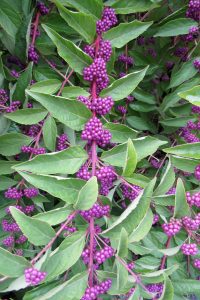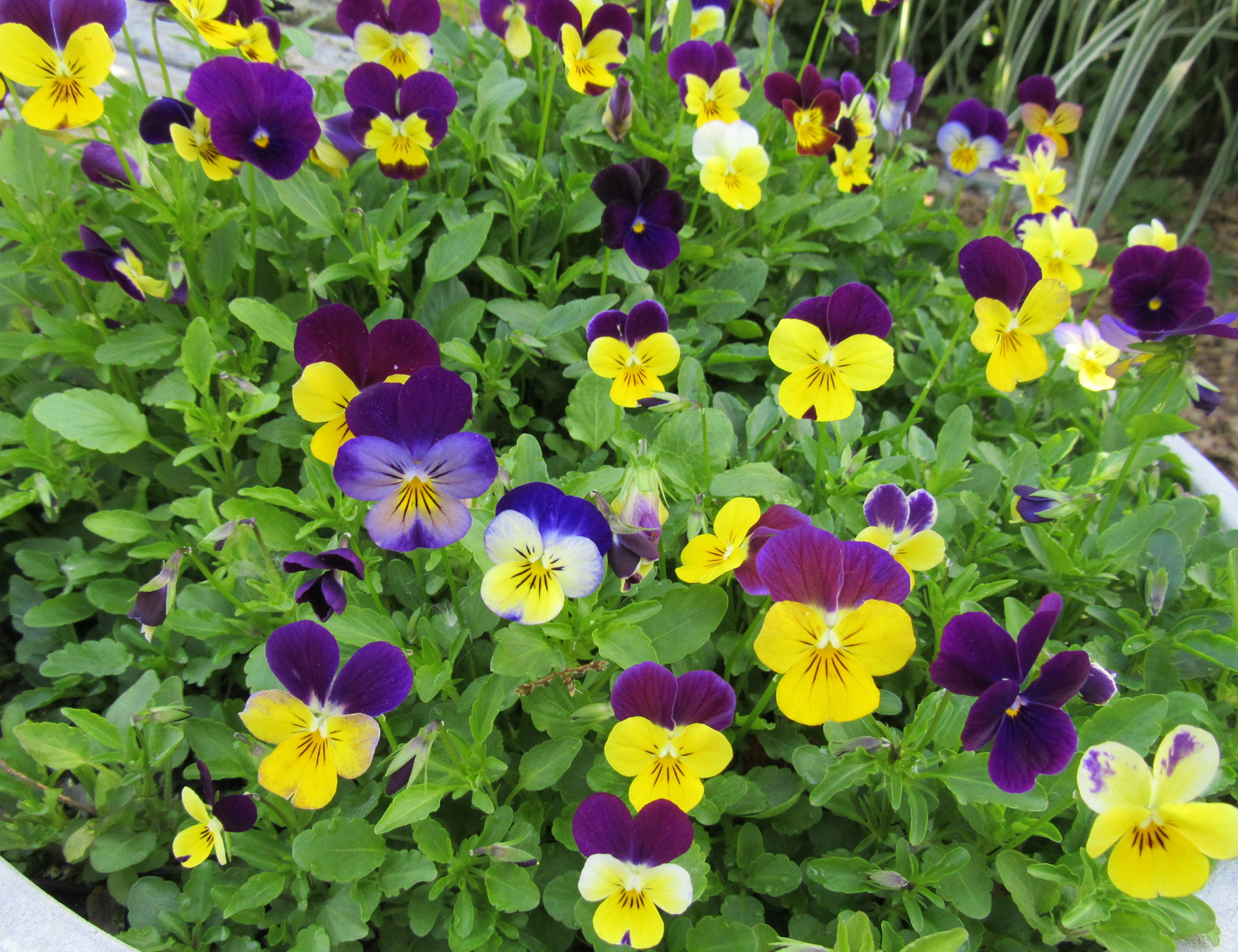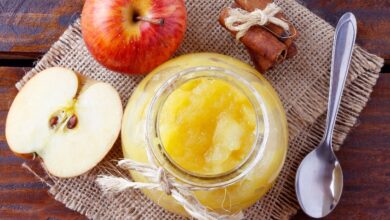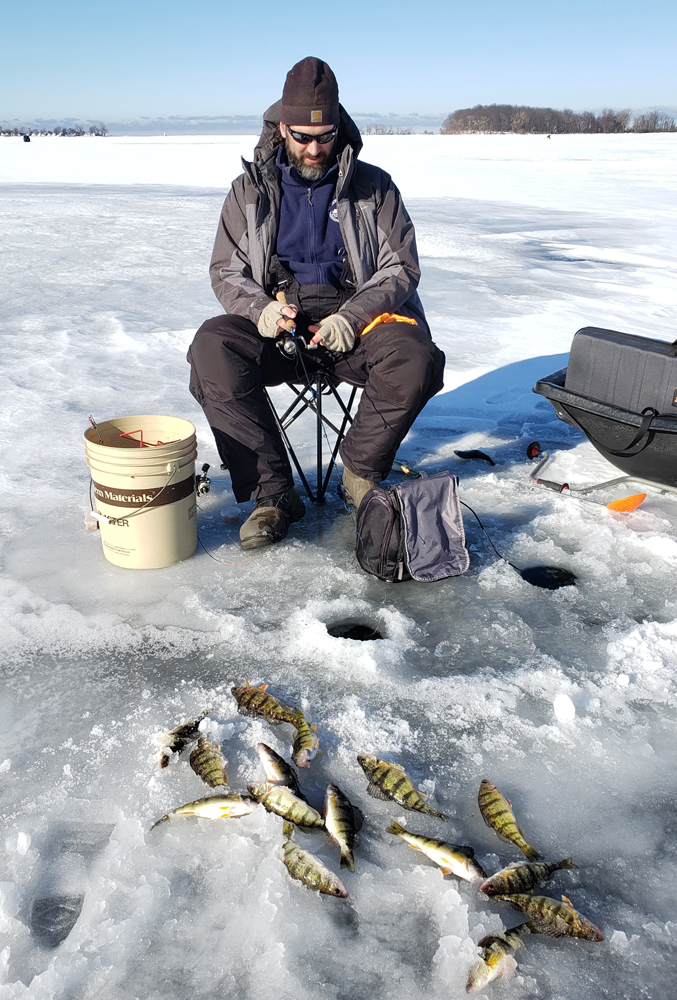Beautyberry
I know I’ve written before about the beauty of shrubs in the landscape during autumn and into the winter. A recent visit to Kirby’s Farm Market in Brockport reminded me about beautyberry (Callicarpa spp.), which is a native plant, but more common in the warmer areas of the U.S. – the woodland areas of the southeastern United States.
The beautyberry at Kirby’s – growing in one of their border beds on the west side of the market – was loaded with bright purple berries on graceful arching stems. The foliage was also pleasing with elliptical/oval shaped leaves with saw-toothed margins.

I asked an employee about hardiness and she assured me that the shrub can be grown locally and that the berries persist into winter, adding a bright spot of color in the landscape.
According to the U.S. Department of Agriculture, American beautyberry shrubs grow naturally in dry and moist open woods and thickets. Their fruits are a food source for many birds as well as wildlife and they are grown for their ornamental flowers as well as their colorful clusters of fruits.
Clemson University Cooperative Extension says C. americana is considered hardy in Zones 7-11, but three Asian species – C. japonica – from Japan, and C. bodinieri and C. dichotoma from China – are cultivated and considered to have more tolerance to cold, allowing them to thrive in Zones 5-8.
Monrovia offers a “Profusion Beautyberry,” which is one of the bodinieri species from Asia. It is hardy in Zones 5-8.
Clemson Cooperative Extension says both American and Asian beautyberry shrubs grow four to six feet tall and wide, but can get as big as eight to ten feet under favorable conditions. They are long lived and grow at a moderate to rapid rate depending on the species and growing conditions. You can control size with yearly pruning, which should be done in late winter or early spring as flowers are produced on new growth.
Use either a thinning-type pruning or cut the shrub back all the way to near the ground if your species is large or fast growing. According to Clemson, severe pruning of vigorous plants grown in full sun will create a large rounded shrub with many long shoots that flower heavily and produce many purple or white fruit.
Beautyberry prefers fertile, loose and well-drained soil, but will tolerate moist soil conditions. They will grow in light to moderate shade, but if you want maximum flowering and berry production, plant in full sun and provide adequate moisture. The shrubs will develop a cascading or weeping effect as they mature, which adds to their interest in the landscape.
Clusters of small, lavender-pink blossoms are produced in late spring or early summer. The immature green berries develop on new growth at the leaf axils through August and mature to purple or white in late summer through fall.
Beautyberry is deciduous with the leaves turning a pale chartreuse before dropping in the fall. The berries stay on the plant into the winter.
Clemson says the Callicarpa species will reproduce from seed and new plants can be grown from seed. Named cultivars are generally reproduced from cuttings.
If you are looking for something different to add an eye-catching display to your yard late in the season, beautyberry might be fun to try.





